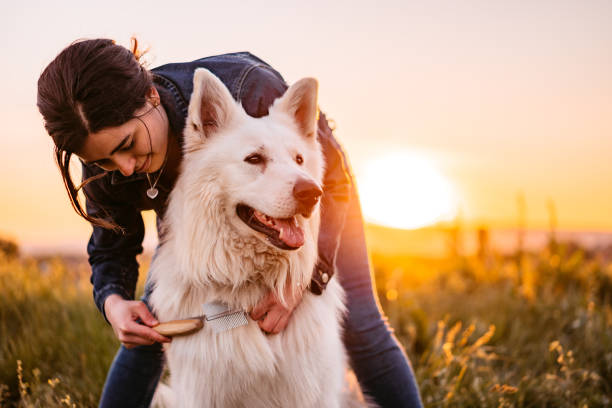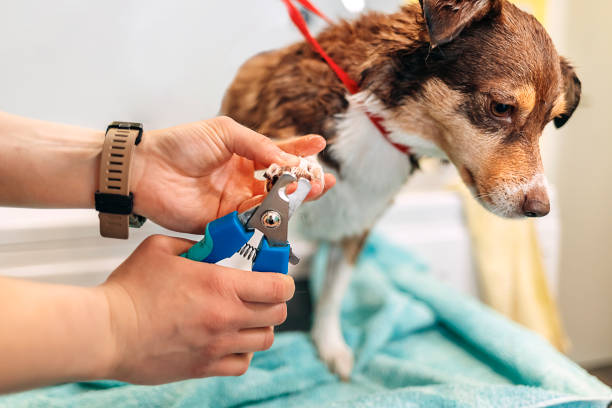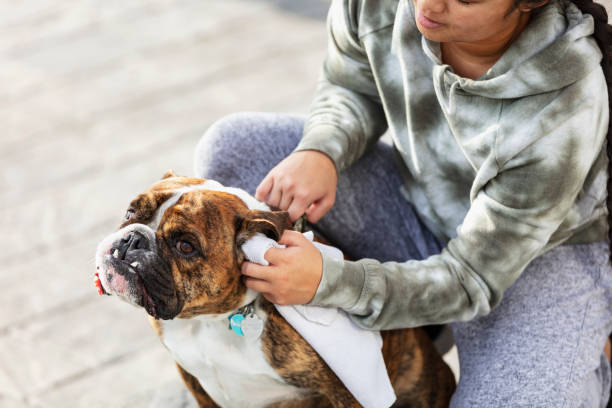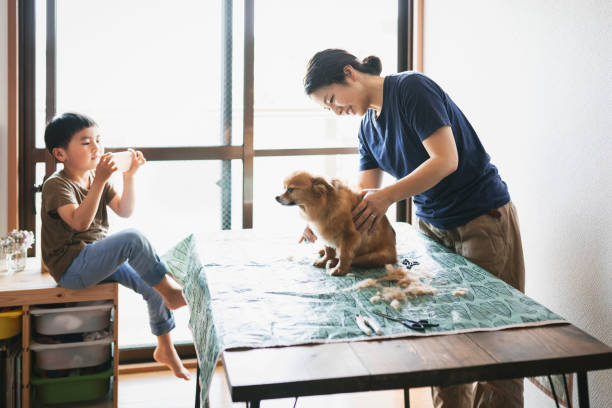DIY Dog Grooming at Home
Dog grooming is not only essential to your pet’s appearance, but it also provides several health benefits. Grooming involves basic tasks such as brushing, bathing and nail trimming as well as more specialized tasks like ear cleaning and anal gland expression.
Learn how to meet your dog’s grooming needs at home with these DIY tips from the experts.
Brushing
Brushing your dog regularly is one of the easiest DIY grooming tasks to accomplish at home. It helps to keep your pet’s coat healthy, reduces the amount of hair shed throughout the house, and makes it easier to spot illnesses that may be present.

The key to successful DIY grooming is getting your dog comfortable with the brush and other tools. Start with letting your dog sniff the brushes and rewarding them with small treats when they approach. Then gradually increase the length of time you spend brushing your pet and always end with a big treat, like a bully stick. If your dog is nervous about being brushed, try placing the brush by their food bowl and praising them when they approach it.
Another key is to be patient. Some dogs take a long time to get used to being brushed and it takes patience to make sure the entire experience is enjoyable for them. If you are having trouble with a stubborn or nervous dog, ask for help from a trusted friend or family member to hold them and calm them while you brush.
A good time to groom your pet is after a bath. Use a dog-friendly shampoo and comb gently through their fur starting at the head and working down to their tail. Be especially careful around the ears and eyes, as these areas are sensitive to touch.
Nail Trimming
Trimming your dog’s nails can be a bit of a challenge, particularly for dogs who are afraid or uninterested. It’s important to practice with them early on, starting when they are puppies or kittens, so that they get accustomed to having their feet handled and clipped. This will make them less fearful and nervous when it comes time to cut their nails as adults.

Start by holding their paws gently and carefully to get them used to the sensation. Once they are comfortable with this, slowly and carefully begin to trim a few nails at a time. Make sure that you are only cutting the tip of each nail and not close to the quick, which is pink and sensitive.
If your dog seems stressed or uncomfortable, stop and try again later. Sometimes a quick walk or play session will help calm them down, and you can always use treats and praise to entice them to cooperate. It also helps to trim in a room where your dog feels at ease, and to keep some styptic powder or cornstarch on hand in case of accidental nicks.
If your dog is especially nervous or a squirmer, it may be helpful to have someone else help you. It’s also a good idea to have a chew toy or lick mat nearby to distract them from the nail trimming process.
Ear Cleaning
Owning a dog is fun and rewarding, but it also comes with many responsibilities. Regularly grooming your dog can help keep them healthy and happy. Among these responsibilities is cleaning your dog’s ears. Although it might seem like a daunting task, with the right technique, ear cleaning your dog at home can be quick and easy.
To start, have a bottle of ear cleanser ready and something to wipe the debris from your pet’s ears, such as cotton balls or makeup remover pads (without any product on them). Make sure that whatever you use is non-abrasive, because you don’t want to damage the sensitive tissue in your dog’s ears. Also, never stick a Q-Tip into your dog’s ear further than you can see; doing so could pack wax and other materials deeper into the ear canal or even rupture your dog’s eardrum.

Once you have your tools ready, gently grasp your dog’s ear flap and pull upward to expose the ear canal. Then, using the ear cleanser of your choice, begin massaging the base of the ear. Most dogs will shake their heads during this part of the process, which is fine, as it will help wisk the cleaner and debris out of their ears.
Once you’ve finished massaging, gently wipe away any excess ear wash from around the outside of the ear and then give your dog a treat. Repeat the entire process on the other ear, making sure to reward your dog throughout the process.
Paw Trimming
Keeping your pup’s paw pads neatly trimmed will reduce the chances of grass seeds, twigs, or debris getting stuck in the fur and causing discomfort to your dog as well as irritated skin. Using the tip of sharp scissors, gently trim the fur around the paw pad area. You should not cut any of the webbing in between the paw pads.
If you do not have the confidence in yourself to clip your dog’s paw hair, ask someone to help out as this is one of the most sensitive parts of a pup’s body. If you are working alone, start with the top of the paw and then move to the bottom. You should carefully remove the hair that covers the pads and keep an eye out for matting.
Trimming a dog’s nails is also important to ensure they are healthy and not too long. Nails that are too long can cause your pup to have a hard time walking on some surfaces and can even puncture the paw pads, which may lead to infection or fungus.
To trim a dog’s nails, use a pair of small, good quality trimming scissors that allow for precise cutting like the DDG grooming scissors.

